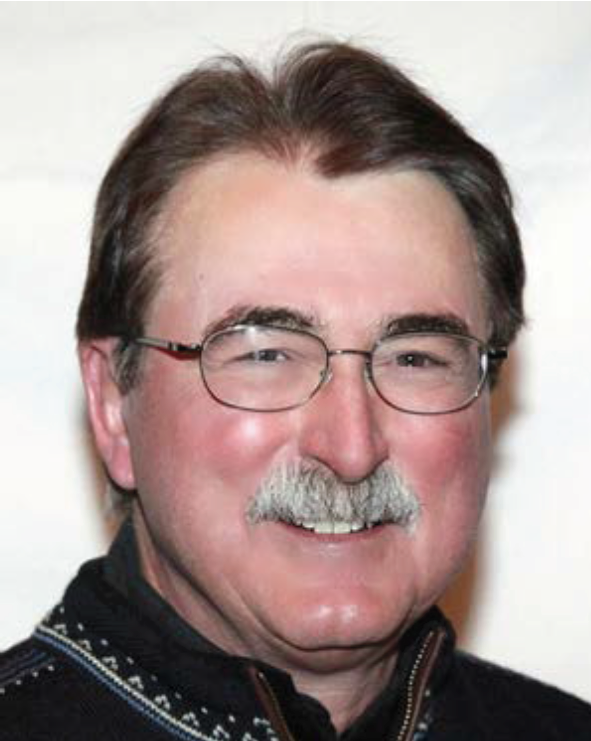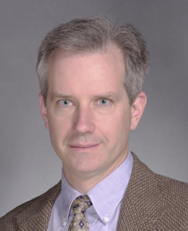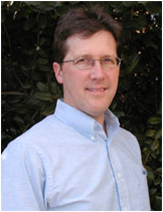 Andrew Hess (Hess Associates) – President
Andrew Hess (Hess Associates) – President (
email) Andrew Hess is a 1969 graduate of the University of Virginia (BS Aerospace Engineering) and the U. S. Navy Test Pilot School. Andy attended George Washington University working towards a Masters in Technology Management and has completed many Navy and DOD sponsored professional and acquisition management courses. Andy is world renowned for his work in fixed and rotary wing health monitoring and is recognized as the father of Naval Aviation propulsion diagnostics. Working for the Naval Air System Command and beginning with the A-7E Engine Monitoring System program of the early 70’s, Andy has been the leading advocate for health monitoring in the Naval Aviation. He has been actively involved in every NAVAIR aircraft program since the F-8, leading to the evolution and development of not just engine monitoring; but also aircraft structural life usage, comprehensive health monitoring and management capabilities for most all other aircraft subsystems and advance maintenance concepts like Condition Based Maintenance (CBM+). For the last 10 years of his government career, Andy worked leading and managing the vision, the development, and integration of the Prognostic and Health Management (PHM) system the AL support concept for the Joint Strike Fighter program. Andy’s consulting interests are now leading him and his clients to exploring the application of PHM capabilities and CBM+ related support concepts to many new industry sectors such as: industrial gas and steam turbines, ships and fast patrol boats, unmanned vehicles, wind energy, nuclear energy, ground vehicles, mining, and gas and oil. Serving on the Board of Directors, Andy helped establish and grow the new and very successful PHM Society professional organization and has just been named president of the society. Recently, Andy was named an Asset Management Fellow with the International Society of Engineering Asset Management and is a member of the new SAE HM-1 committee on Integrated Vehicle Health Management Systems.
 Wolfgang Fink (University of Arizona) – Vice President
Wolfgang Fink (University of Arizona) – Vice President (
email) Prof. Wolfgang Fink is the inaugural Edward & Maria Keonjian Endowed Chair with joint appointments in the Departments of Electrical & Computer Engineering, Biomedical Engineering, Systems & Industrial Engineering, Aerospace & Mechanical Engineering, and Ophthalmology & Vision Science at the University of Arizona (UArizona). Pursuing a trans-disciplinary systems engineering approach in “smart service systems” in general, and autonomous/reasoning systems, human/brain-machine interfaces, and evolutionary optimization in particular, he has focused his research on autonomous robotic space exploration, cognitive/reasoning systems, artificial vision prostheses, smart platforms for mobile- and tele-health, and computer-optimized design. Dr. Fink pursues an opportunistic approach from conceptualization, subsequent development, to eventual generation of publications, intellectual property (IP), and commercialization. As a result, he has over 258 publications (including journal, book, and conference contributions), 6 NASA Patent Awards, as well as 23 US and foreign patents awarded to date (numerous additional patents pending) in the areas of autonomous systems, biomedical devices, neural stimulation, MEMS fabrication, data fusion and analysis, and multi-dimensional optimization. Numerous of these patents have been licensed successfully to two startup companies in the ophthalmic and tele-ophthalmic sector, for one of which he serves as the Chief Science Officer. Furthermore, he was a Board of Directors founding member and Chief Science Officer of the non-profit Mars Agricultural Research Consortium (MARSAG) that focused on autonomous planetary precision agriculture (2018-2020). Trained as a theoretical physicist, Dr. Fink has actively sought out collaboration with experts in medical technology and healthcare, planetary science, aerospace, and systems design throughout his career. This is further emphasized by his affiliations with three major universities and one Federally Funded Research and Development Center (FFRDC): UArizona (2009-present), California Institute of Technology (1998-2016), NASA’s Jet Propulsion Laboratory (2001-2009), and University of Southern California (2001-2014), as well as his cross-disciplinary appointments in the College of Engineering and the College of Medicine at the UArizona. He has been an integral part of large-scale, multi-institutional, collaborative and multi-disciplinary research enterprises: The DOE-funded Artificial Retina Cooperative Research and Development Agreement (CRADA), the NSF-funded Biomimetic MicroElectronic Systems Engineering Research Center, and the Center for Evolutionary Computation and Automated Design (CECAD) at NASA’s Jet Propulsion Laboratory. Moreover, in recognition of his research accomplishments, Dr. Fink is an SPIE Fellow, PHMS Fellow, AIMBE Fellow, UArizona da Vinci Fellow, UArizona ACABI Fellow, and Senior Member IEEE. He has taken on numerous leadership roles in professional societies (e.g., SPIE, IEEE, PHM Society), and serves as an Editorial Board Member of two international journals. His commitment to STEM education in general, and underrepresented minorities in particular, has been recognized by the University Excellence in STEM Diversity Award.
 Karl Reichard (Penn State University) – Treasurer
Karl Reichard (Penn State University) – Treasurer (
email) Dr. Karl Reichard is a Research Associate at the Applied Research Laboratory at The Pennsylvania State University and Deputy Department Head of the Advanced Sensors and Controls Department in the Multisensor Processing Division. He has more than 15 years of experience in the development of advanced sensors, measurement systems, and signal processing algorithms. An Assistant Professor of Acoustics at Penn State and Head of the Condition-Based Maintenance Department at the University’s Applied Research Laboratory, Dr. Reichard leads advanced research and development efforts in embedded systems, electro-optics, intelligent acoustic and vibration sensors, and signal processing and classification algorithms for active noise and vibration control, manufacturing machinery monitoring, and surveillance systems. Prior to joining Penn State ARL in 1991, he was employed by the U.S. Army Aberdeen Proving Grounds and Virginia Polytechnic Institute and State University, his alma mater. Dr. Reichard has published more than 25 papers in refereed journals, conference publications, and technical reports. Dr. Reichard serves as Associate Editor of the International Journal on Prognostics and Health Management.
 Peter Sandborn (University of Maryland) – Secretary
Peter Sandborn (University of Maryland) – Secretary (
email) Peter Sandborn is a Professor in the CALCE Electronic Products and Systems Center at the University of Maryland. Dr. Sandborn’s group develops life-cycle cost models and business case support for long field life systems. This work includes: obsolescence forecasting algorithms, strategic design refresh planning, lifetime buy quantity optimization, and return on investment models for maintenance planning (including the application of PHM to systems). Dr. Sandborn is an Associate Editor of the IEEE Transactions on Electronics Packaging Manufacturing, the North American Editor of the International Journal of Performability Engineering, and on the Board of Directors of the International PHM Society. He has authored over 150 technical publications and several books on electronic packaging and electronic systems cost analysis; and was the winner of the 2004 SOLE Proceedings Award; the 2006 Eugene L. Grant Award for best paper in the journal Engineering Economics; and the Best Paper Award at the IEEE PHM Conference in 2011. He has a B.S. degree in engineering physics from the University of Colorado, Boulder, in 1982, and the M.S. degree in electrical science and Ph.D. degree in electrical engineering, both from the University of Michigan, Ann Arbor, in 1983 and 1987, respectively.
 Wolfgang Fink (University of Arizona) – Vice President (email) Prof. Wolfgang Fink is the inaugural Edward & Maria Keonjian Endowed Chair with joint appointments in the Departments of Electrical & Computer Engineering, Biomedical Engineering, Systems & Industrial Engineering, Aerospace & Mechanical Engineering, and Ophthalmology & Vision Science at the University of Arizona (UArizona). Pursuing a trans-disciplinary systems engineering approach in “smart service systems” in general, and autonomous/reasoning systems, human/brain-machine interfaces, and evolutionary optimization in particular, he has focused his research on autonomous robotic space exploration, cognitive/reasoning systems, artificial vision prostheses, smart platforms for mobile- and tele-health, and computer-optimized design. Dr. Fink pursues an opportunistic approach from conceptualization, subsequent development, to eventual generation of publications, intellectual property (IP), and commercialization. As a result, he has over 258 publications (including journal, book, and conference contributions), 6 NASA Patent Awards, as well as 23 US and foreign patents awarded to date (numerous additional patents pending) in the areas of autonomous systems, biomedical devices, neural stimulation, MEMS fabrication, data fusion and analysis, and multi-dimensional optimization. Numerous of these patents have been licensed successfully to two startup companies in the ophthalmic and tele-ophthalmic sector, for one of which he serves as the Chief Science Officer. Furthermore, he was a Board of Directors founding member and Chief Science Officer of the non-profit Mars Agricultural Research Consortium (MARSAG) that focused on autonomous planetary precision agriculture (2018-2020). Trained as a theoretical physicist, Dr. Fink has actively sought out collaboration with experts in medical technology and healthcare, planetary science, aerospace, and systems design throughout his career. This is further emphasized by his affiliations with three major universities and one Federally Funded Research and Development Center (FFRDC): UArizona (2009-present), California Institute of Technology (1998-2016), NASA’s Jet Propulsion Laboratory (2001-2009), and University of Southern California (2001-2014), as well as his cross-disciplinary appointments in the College of Engineering and the College of Medicine at the UArizona. He has been an integral part of large-scale, multi-institutional, collaborative and multi-disciplinary research enterprises: The DOE-funded Artificial Retina Cooperative Research and Development Agreement (CRADA), the NSF-funded Biomimetic MicroElectronic Systems Engineering Research Center, and the Center for Evolutionary Computation and Automated Design (CECAD) at NASA’s Jet Propulsion Laboratory. Moreover, in recognition of his research accomplishments, Dr. Fink is an SPIE Fellow, PHMS Fellow, AIMBE Fellow, UArizona da Vinci Fellow, UArizona ACABI Fellow, and Senior Member IEEE. He has taken on numerous leadership roles in professional societies (e.g., SPIE, IEEE, PHM Society), and serves as an Editorial Board Member of two international journals. His commitment to STEM education in general, and underrepresented minorities in particular, has been recognized by the University Excellence in STEM Diversity Award.
Wolfgang Fink (University of Arizona) – Vice President (email) Prof. Wolfgang Fink is the inaugural Edward & Maria Keonjian Endowed Chair with joint appointments in the Departments of Electrical & Computer Engineering, Biomedical Engineering, Systems & Industrial Engineering, Aerospace & Mechanical Engineering, and Ophthalmology & Vision Science at the University of Arizona (UArizona). Pursuing a trans-disciplinary systems engineering approach in “smart service systems” in general, and autonomous/reasoning systems, human/brain-machine interfaces, and evolutionary optimization in particular, he has focused his research on autonomous robotic space exploration, cognitive/reasoning systems, artificial vision prostheses, smart platforms for mobile- and tele-health, and computer-optimized design. Dr. Fink pursues an opportunistic approach from conceptualization, subsequent development, to eventual generation of publications, intellectual property (IP), and commercialization. As a result, he has over 258 publications (including journal, book, and conference contributions), 6 NASA Patent Awards, as well as 23 US and foreign patents awarded to date (numerous additional patents pending) in the areas of autonomous systems, biomedical devices, neural stimulation, MEMS fabrication, data fusion and analysis, and multi-dimensional optimization. Numerous of these patents have been licensed successfully to two startup companies in the ophthalmic and tele-ophthalmic sector, for one of which he serves as the Chief Science Officer. Furthermore, he was a Board of Directors founding member and Chief Science Officer of the non-profit Mars Agricultural Research Consortium (MARSAG) that focused on autonomous planetary precision agriculture (2018-2020). Trained as a theoretical physicist, Dr. Fink has actively sought out collaboration with experts in medical technology and healthcare, planetary science, aerospace, and systems design throughout his career. This is further emphasized by his affiliations with three major universities and one Federally Funded Research and Development Center (FFRDC): UArizona (2009-present), California Institute of Technology (1998-2016), NASA’s Jet Propulsion Laboratory (2001-2009), and University of Southern California (2001-2014), as well as his cross-disciplinary appointments in the College of Engineering and the College of Medicine at the UArizona. He has been an integral part of large-scale, multi-institutional, collaborative and multi-disciplinary research enterprises: The DOE-funded Artificial Retina Cooperative Research and Development Agreement (CRADA), the NSF-funded Biomimetic MicroElectronic Systems Engineering Research Center, and the Center for Evolutionary Computation and Automated Design (CECAD) at NASA’s Jet Propulsion Laboratory. Moreover, in recognition of his research accomplishments, Dr. Fink is an SPIE Fellow, PHMS Fellow, AIMBE Fellow, UArizona da Vinci Fellow, UArizona ACABI Fellow, and Senior Member IEEE. He has taken on numerous leadership roles in professional societies (e.g., SPIE, IEEE, PHM Society), and serves as an Editorial Board Member of two international journals. His commitment to STEM education in general, and underrepresented minorities in particular, has been recognized by the University Excellence in STEM Diversity Award. Karl Reichard (Penn State University) – Treasurer (email) Dr. Karl Reichard is a Research Associate at the Applied Research Laboratory at The Pennsylvania State University and Deputy Department Head of the Advanced Sensors and Controls Department in the Multisensor Processing Division. He has more than 15 years of experience in the development of advanced sensors, measurement systems, and signal processing algorithms. An Assistant Professor of Acoustics at Penn State and Head of the Condition-Based Maintenance Department at the University’s Applied Research Laboratory, Dr. Reichard leads advanced research and development efforts in embedded systems, electro-optics, intelligent acoustic and vibration sensors, and signal processing and classification algorithms for active noise and vibration control, manufacturing machinery monitoring, and surveillance systems. Prior to joining Penn State ARL in 1991, he was employed by the U.S. Army Aberdeen Proving Grounds and Virginia Polytechnic Institute and State University, his alma mater. Dr. Reichard has published more than 25 papers in refereed journals, conference publications, and technical reports. Dr. Reichard serves as Associate Editor of the International Journal on Prognostics and Health Management.
Karl Reichard (Penn State University) – Treasurer (email) Dr. Karl Reichard is a Research Associate at the Applied Research Laboratory at The Pennsylvania State University and Deputy Department Head of the Advanced Sensors and Controls Department in the Multisensor Processing Division. He has more than 15 years of experience in the development of advanced sensors, measurement systems, and signal processing algorithms. An Assistant Professor of Acoustics at Penn State and Head of the Condition-Based Maintenance Department at the University’s Applied Research Laboratory, Dr. Reichard leads advanced research and development efforts in embedded systems, electro-optics, intelligent acoustic and vibration sensors, and signal processing and classification algorithms for active noise and vibration control, manufacturing machinery monitoring, and surveillance systems. Prior to joining Penn State ARL in 1991, he was employed by the U.S. Army Aberdeen Proving Grounds and Virginia Polytechnic Institute and State University, his alma mater. Dr. Reichard has published more than 25 papers in refereed journals, conference publications, and technical reports. Dr. Reichard serves as Associate Editor of the International Journal on Prognostics and Health Management. Peter Sandborn (University of Maryland) – Secretary (email) Peter Sandborn is a Professor in the CALCE Electronic Products and Systems Center at the University of Maryland. Dr. Sandborn’s group develops life-cycle cost models and business case support for long field life systems. This work includes: obsolescence forecasting algorithms, strategic design refresh planning, lifetime buy quantity optimization, and return on investment models for maintenance planning (including the application of PHM to systems). Dr. Sandborn is an Associate Editor of the IEEE Transactions on Electronics Packaging Manufacturing, the North American Editor of the International Journal of Performability Engineering, and on the Board of Directors of the International PHM Society. He has authored over 150 technical publications and several books on electronic packaging and electronic systems cost analysis; and was the winner of the 2004 SOLE Proceedings Award; the 2006 Eugene L. Grant Award for best paper in the journal Engineering Economics; and the Best Paper Award at the IEEE PHM Conference in 2011. He has a B.S. degree in engineering physics from the University of Colorado, Boulder, in 1982, and the M.S. degree in electrical science and Ph.D. degree in electrical engineering, both from the University of Michigan, Ann Arbor, in 1983 and 1987, respectively.
Peter Sandborn (University of Maryland) – Secretary (email) Peter Sandborn is a Professor in the CALCE Electronic Products and Systems Center at the University of Maryland. Dr. Sandborn’s group develops life-cycle cost models and business case support for long field life systems. This work includes: obsolescence forecasting algorithms, strategic design refresh planning, lifetime buy quantity optimization, and return on investment models for maintenance planning (including the application of PHM to systems). Dr. Sandborn is an Associate Editor of the IEEE Transactions on Electronics Packaging Manufacturing, the North American Editor of the International Journal of Performability Engineering, and on the Board of Directors of the International PHM Society. He has authored over 150 technical publications and several books on electronic packaging and electronic systems cost analysis; and was the winner of the 2004 SOLE Proceedings Award; the 2006 Eugene L. Grant Award for best paper in the journal Engineering Economics; and the Best Paper Award at the IEEE PHM Conference in 2011. He has a B.S. degree in engineering physics from the University of Colorado, Boulder, in 1982, and the M.S. degree in electrical science and Ph.D. degree in electrical engineering, both from the University of Michigan, Ann Arbor, in 1983 and 1987, respectively.